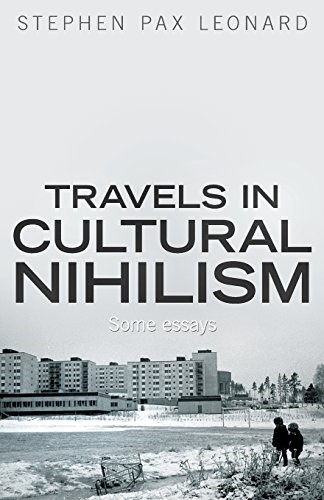The Special Jewish Role in Passage of the 1965 Immigration Law: A Reply to Abraham Miller
I seem to be up to my eyeballs lately defending my writing on Jewish issues. In the wake of Nathan Cofnas’s attack on The Culture of Critique (to which I responded here and here; note Cofnas does not dispute my scholarship on immigration), the Wall Street Journal published an op-ed by Abraham Miller, an emeritus professor of political science at the University of Cincinnati. Miller:
Mr. MacDonald characterizes Jewish behavior in terms of the theory of group evolutionary psychology, based on competition among groups for resources and survival. Most scholars of evolutionary psychology reject Mr. MacDonald’s methods and conclusions. White nationalists and supremacists embrace him, and he returns their affection. …
Mr. MacDonald claims that Jewish traits, such as high verbal intelligence and ethnocentrism, have evolved to the point that Jews, as a group, outcompete non-Jews at the expense of Christian majorities. He further argues that Jews are genetically programmed to undermine Christian civilization. Intellectual movements such as multiculturalism and liberalism serve, in his view, to heighten Jewish advantage because a Christian majority mired in a multicultural society is less likely to foster anti-Semitism.
It is true that Jewish communal organizations are major supporters of multiculturalism. Then again, so are most mainstream churches, on both sides of the papal divide. Christian communal groups loudly extol their commitment to inclusion and diversity.
But Jewish leadership was neither a necessary nor a sufficient condition for the passage of the 1965 immigration law. Rather, a liberalizing wave had already swept the West in the decades after World War II, bringing an end to colonialism and informing U.S. competition with the Soviet Union. In this context, America’s 1924 immigration law, which favored Western European immigration, had become an international embarrassment.
My view is that Jewish organizations and Jewish academic activism were a necessary condition for passage of the 1965 immigration law, as discussed in Chapter 7 of The Culture of Critique. The data I bring to bear on this issue leaves little doubt that Jewish organizations as well as restrictionists and anti-restrictionists in Congress understood that Jewish organizations had spearheaded the movement against the national origins provisions of the 1924 law and for opening up immigration to all the peoples of the world. Jewish organizations maintained their pressure over the 40 years since the passage of the 1924 law, often combating public apathy on the issue—in particular during the 1950s. Jewish organizations, such as the American Jewish Committee, organized, funded, and performed most of the work of a variety of umbrella organizations aimed at combating restrictions on immigration (e.g., the National Liberal Immigration League; the Citizens Committee for Displaced Persons; the National Commission on Immigration and Citizenship; the American Immigration Conference). The 1965 reform was thus not the result of popular pressure but rather of a 40-year program of activism. Finally, the “liberalizing wave” that resulted in the 1965 law was critically influenced by the other Jewish movements that are the focus of The Culture of Critique, as discussed below.
Miller mentions the role of Rep. Michael A. Feighan, Chairman of the House Subcommittee on Immigration and a strong opponent of changing the 1924 law until he capitulated shortly before the 1965 law was passed. Miller implies that Feighan wanted an immigration policy that he knew would ultimately make the U.S. into a multi-racial, White minority society. As chairman of the subcommittee, Feighan did have a role in crafting the family-based immigration mechanism that has resulted in chain migration. However, it’s obvious that Feighan would not have advocated such a measure if he realized how such a policy would turn out after the national origins provisions were gutted and the numbers of non-European immigrants were dramatically increased by later legislation — especially given his long record of opposing any changes in the 1924 law (see NPR: “In 1965 A Conservative Tried to Keep America White. His Plan Backfired“). Rep. Feighan could not foresee a future in which large numbers became the reality; this is quite likely due to the fact that the 1965 law was advertised by its proponents as not changing the ethnic balance of the U.S. by dramatically increasing the numbers of non-European immigrants. Moreover, as noted in Chapter 7, family-based immigration rather than skills-based immigration had always been promoted by Jewish activists in the immigration battles, at least since the 1920s.
Finally, since my chapter appeared, other scholars of the 1965 law have noted the critical role of Jewish organizations.
This is how Vanderbilt historian Hugh Davis Graham summarized it in his 2002 book Collision Course (pp. 56-57):
Most important for the content of immigration reform, the driving force at the core of the movement, reaching back to the 1920s, were Jewish organizations long active in opposing racial and ethnic quotas. These included the American Jewish Congress, the American Jewish Committee, the Anti-Defamation League of B’nai B’rith, and the American Federation of Jews from Eastern Europe. Jewish members of the Congress, particularly representatives from New York and Chicago, had maintained steady but largely ineffective pressure against the national origins quotas since the 1920s…. Following the shock of the Holocaust, Jewish leaders had been especially active in Washington in furthering immigration reform. To the public, the most visible evidence of the immigration reform drive was played by Jewish legislative leaders, such as Representative Celler and Senator Jacob Javits of New York. Less visible, but equally important, were the efforts of key advisers on presidential and agency staffs. These included senior policy advisers such as Julius Edelson and Harry Rosenfield in the Truman administration, Maxwell Rabb in the Eisenhower White House, and presidential aide Myer Feldman, assistant secretary of state Abba Schwartz, and deputy attorney general Norbert Schlei in the Kennedy-Johnson administration.
University of California-Santa Barbara historian Otis L. Graham, Jr., writing in 2005:
But American immigration policy in the postwar years attracted a small but growing body of opponents. The political core of a coalition pressing for a new, more “liberalized” policy regime was composed of ethnic lobbyists (“professional immigrant-handlers,” Rep. Francis Walter called them) claiming to speak for nationalities migrating prior to the National Origins Act of 1924, the most effective being Jews from central and eastern Europe who were deeply concerned with the rise of fascism and anti-semitism on the continent and eternally interested in haven. Unable by themselves to interest many politicians or the media in the settled issue of America’s immigration law, these groups hoped for new circumstances in which restrictions could be discredited and the old regime of open doors restored. The arrival of the Civil Rights Movement thrust (racial) “discrimination” into the center of national self-examination. The enemy everywhere at the bottom of virtually every national blemish seemed to be Discrimination, the historic, now intolerable subordinating classification of groups on the basis of inherited characteristics. The nation’s national origins-grounded immigration laws could not escape an assault by these reformist passions, and critics of the national origins system found the liberal wing of the Democratic Party receptive to their demand that immigration reform should be a part of the civil rights agenda.
Who would lead, and formulate what alternatives? Massachusetts Senator John F. Kennedy cautiously stepped out on the issue in the 1950s, sensing that a liberalization stance would gather vital ethnic voting blocs for his long-planned run for the presidency. His work on a refugee bill caught the attention of officials of the Anti-Defamation League of B’nai B’rith, who convinced Kennedy to become an author of a pamphlet on immigration, with the help of an ADL supplied historian, Arthur Mann, and Kennedy’s staff. The result was A Nation of Immigrants, a 1958 bouquet of praise for the contributions of immigrants and a call for an end to the racist, morally embarrassing national origins system. The little book was initially ignored, but its arguments would dominate the emerging debate.3 The ADL, part of a Jewish coalition whose agenda included opening wider the American gates so that increasing U.S. ethnic heterogeneity would reduce the chances of a populist mass movement embracing anti-semitism, had made a golden alliance.4 John F. Kennedy was no crusader on immigration (or anything else), but he was an activist young President by 1961, comfortable with immigration reform as part of his agenda, elected on a party platform that pledged elimination of the national origins system.
The entire article is well worth reading. Notice in particular that he describes the motive for Jewish activism in the same way I did in my 1998 chapter: “The ADL, part of a Jewish coalition whose agenda included opening wider the American gates so that increasing U.S. ethnic heterogeneity would reduce the chances of a populist mass movement embracing anti-semitism, had made a golden alliance.” Despite the high-flown rhetoric stemming from Jewish organizations, it was really all about ethnic defense by promoting a policy that would inevitably reduce the demographic, political, and cultural power of European-Americans.
Graham also notes that the passage of the 1965 law was greatly facilitated by the sea change in intellectual attitudes on race which stemmed ultimately from the academic activism of Boas and his followers as well as the other movements of the left discussed in previous chapters of The Culture of Critique. This is why in the beginning of my chapter I discuss the ideology of racial equality as being critical. From Chapter 7:
The ideology of racial equality was an important weapon on behalf of opening immigration up to all human groups. For example, in a 1951 statement to Congress, the AJCongress stated, “The findings of science must force even the most prejudiced among us to accept, as unqualifiedly as we do the law of gravity, that intelligence, morality and character, bear no relationship whatever to geography or place of birth.”[i] The statement went on to cite some of Boas’s popular writings on the subject as well as the writings of Boas’s protégé Ashley Montagu, perhaps the most visible opponent of the concept of race during this period.[ii] Montagu, whose original name was Israel Ehrenberg, theorized in the period immediately following World War II that humans are innately cooperative, but not innately aggressive, and there is a universal brotherhood among humans (see Shipman 1994, 159ff). In 1952 another Boas protégé, Margaret Mead, testified before the President’s Commission on Immigration and Naturalization (PCIN) (1953, 92) that “all human beings from all groups of people have the same potentialities. . . . Our best anthropological evidence today suggests that the people of every group have about the same distribution of potentialities.” Another witness stated that the executive board of the American Anthropological Association had unanimously endorsed the proposition that “[a]ll scientific evidence indicates that all peoples are inherently capable of acquiring or adapting to our civilization” (PCIN 1953, 93) (see Ch. 2 for a discussion of the success of the political efforts of the Boasians to dominate the American Anthropological Association). By 1965 Senator Jacob Javits (Cong. Rec., 111, 1965, 24469) could confidently announce to the Senate during the debate on the immigration bill that “both the dictates of our consciences as well as the precepts of sociologists tell us that immigration, as it exists in the national origins quota system, is wrong and without any basis in reason or fact for we know better than to say that one man is better than another because of the color of his skin.” The intellectual revolution and its translation into public policy had been completed.
My emphasis on the special, critical role of Jews and Jewish organizations in the passage of the 1965 law stands.
[i]. Statement of the American Jewish Congress, Joint Hearings Before the Subcommittees of the Committees on the Judiciary, 82nd Congress, 1st Sess., on S. 716, H.R. 2379, and H.R. 2816. March 6–April 9, 1951, 391.
[ii]. Statement of the American Jewish Congress, Joint Hearings Before the Subcommittees of the Committees on the Judiciary, 82nd Cong., 1st Sess., on S. 716, H.R. 2379, and H.R. 2816. March 6–April 9, 1951, 402–403.




 The horseshoe crab is a
The horseshoe crab is a 


